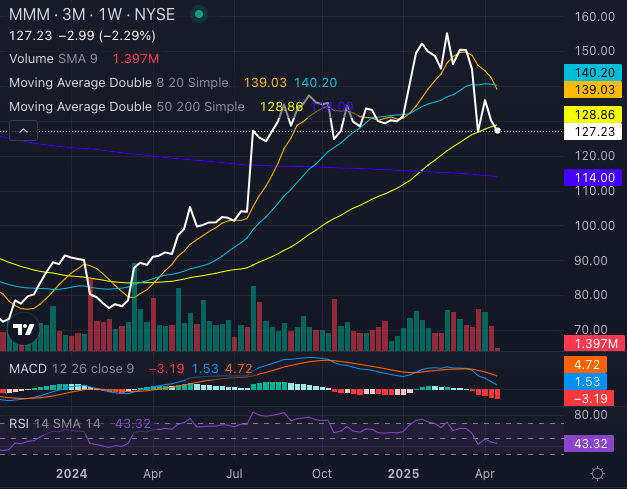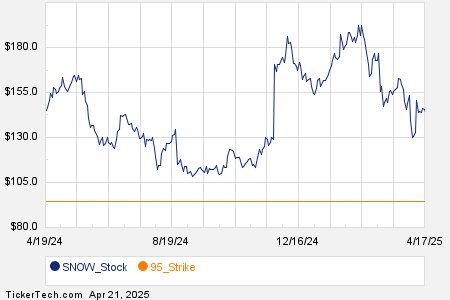Crude Oil and Gas Prices Decline Amid Global Market Concerns
On Monday, May WTI crude oil (CLK25) closed down by -1.60 (-2.47%), while May RBOB gasoline (RBK25) saw a decrease of -0.0335 (-1.60%).
Market Overview
Crude oil and gasoline prices settled at lower levels, influenced by a significant downturn in equity markets that sparked risk-off sentiment across asset markets, which in turn weighed on energy prices. Additionally, the ongoing trade conflict between the US and China raises concerns about a slowdown in economic growth and energy demand. However, losses in crude prices were somewhat mitigated as the dollar index (DXY00) dropped to a three-year low.
Geopolitical Factors Impacting Prices
Potential changes in US export policies regarding Iranian crude oil are expected to have a negative impact on prices. Iran’s foreign minister indicated that recent talks with the US about Iran’s nuclear program revealed a “better understanding.” These discussions will continue on Wednesday in Oman.
According to Vortexa, an increase in crude oil stored on tankers is also bearish for oil prices. The volume of crude oil on stationary tankers increased by +19% week over week to 78.19 million barrels in the week ending April 18, marking the highest level in eight months.
This month, crude prices have been under pressure, having hit a four-year low on April 9. The ongoing tariff disputes are contributing to fears of weaker global economic growth and energy demand, despite President Trump having paused some reciprocal tariffs last Wednesday. Notably, all previously announced tariffs from Trump remain intact.
Demand and Production Trends
Stronger crude demand in China, the world’s largest crude importer, is a supportive factor for oil prices. As reported by Reuters last Monday, China’s crude imports surged to 12.1 million barrels per day in March, the highest level since August 2023.
Crude prices are also affected by OPEC+ decisions. On April 3, OPEC+ announced plans to increase crude production by 411,000 barrels per day in May, considerably more than the +138,000 barrels per day added this month. This increase is part of OPEC+’s strategy to gradually restore the total of 2.2 million barrels per day of production that had been cut over the past two years. The plan to restore production, initially scheduled from January to late 2025, has now been extended to September 2026.
US Sanctions and Middle East Tensions
Crude prices received support following the US Treasury Department’s sanctions on a China-based oil refinery and 19 entities associated with shipping Iranian crude oil. The US is intensifying pressure on Iranian crude exports, with President Trump issuing a letter to Iran’s Supreme Leader, Ali Khamenei, stating that a new nuclear deal must be reached within two months. Rystad Energy A/S estimates that increased sanctions could lead to a reduction of up to 1.5 million barrels per day of Iranian crude from the global market, creating a bullish outlook for crude prices.
Additionally, rising tensions in the Middle East impact crude supply stability. Israel has resumed airstrikes in Gaza, concluding a ceasefire with Hamas, and Prime Minister Netanyahu has pledged to increase military efforts to secure the release of hostages. Furthermore, US military strikes against Yemen’s Houthi rebels signal an ongoing commitment to ensuring maritime security in the Red Sea.
Impact of Sanctions on Russian Oil Exports
On January 10, new US sanctions on Russia’s oil sector were implemented to limit global oil supplies. These measures targeted Gazprom Neft and Surgutneftgas, which nearly exported 970,000 barrels per day of Russian crude in early 2024, representing about 30% of its tanker flow, according to Bloomberg data. The US has also targeted associated insurers and traders linked to various tanker cargoes. Recently, Russian oil product exports increased to a five-month high of 3.45 million barrels per day in March, while weekly data showed crude exports had fallen by -40,000 barrels per day to 3.13 million barrels per day during the week ending April 13.
US Inventory and Rig Counts
Last Wednesday’s EIA report provided key data regarding US oil inventories: (1) crude oil inventories as of April 11 were -5.2% below the seasonal five-year average, (2) gasoline inventories were -0.9% below the seasonal average, and (3) distillate inventories were -10.2% below that average. US crude oil production remained steady at 13.462 million barrels per day, which is slightly below the record high of 13.631 million barrels per day recorded in the week of December 6.
Baker Hughes reported that active US oil rigs increased by one to reach 481 in the week ending April 18, remaining above the three-year low of 472 reported on January 24. The number of oil rigs has seen a decline over the past two years from a high of 627 rigs in December 2022.
On the date of publication, Rich Asplund did not have (either directly or indirectly) positions in any of the securities mentioned in this article. All information and data in this article are solely for informational purposes. For more information, please view the Barchart Disclosure Policy.
here.
The views and opinions expressed herein are solely those of the author and do not necessarily reflect those of Nasdaq, Inc.


